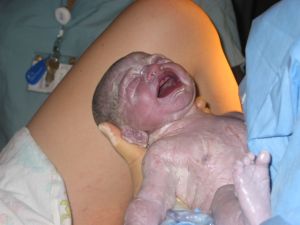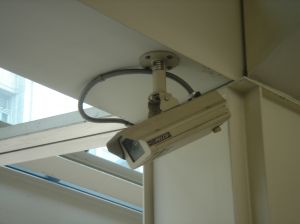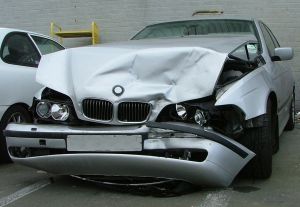 In November, 2012, the Supreme Court of Florida, in Cevallos v Rideout (No. SC09-2238), issued an opinion that buried a misguided and out-dated 2009 decision by the Fourth District Court of Appeals. (Contemporaneously with its decision in Cevallos, the court issued a similar opinion in Birge v. Charron, No. SC10-1755 (Nov. 21, 2012).) The opinion the Supreme Court shot down is that a person injured in a vehicle which has struck the rear of another vehicle cannot prevail unless it is shown that the driver of the trailing vehicle was completely blameless. The 4th’s opinion was in direct conflict with decisions from various district courts of appeal in Florida. Charron v. Birge, 37 So. 3d 292 (Fla. 5th DCA 2010), Cleaveland v. Florida Power & Light, Inc., 895 So. 2d 1143, 1145 (Fla. 4th DCA 2005), Jefferies v. Amery Leasing, Inc., 698 So. 2d 368, 371 (Fla. 5th DCA 1997), Pollock v. Goldberg, 651 So. 2d 721, 722-24 (Fla. 4th DCA 1995), Johnson v. Deep South Crane Rentals, Inc., 634 So. 2d 1113 (Fla. 1st DCA 1994), and Edward M. Chadbourne, Inc. v. Van Dyke, 590 So. 2d 1023 (Fla. 1st DCA 1991).
In November, 2012, the Supreme Court of Florida, in Cevallos v Rideout (No. SC09-2238), issued an opinion that buried a misguided and out-dated 2009 decision by the Fourth District Court of Appeals. (Contemporaneously with its decision in Cevallos, the court issued a similar opinion in Birge v. Charron, No. SC10-1755 (Nov. 21, 2012).) The opinion the Supreme Court shot down is that a person injured in a vehicle which has struck the rear of another vehicle cannot prevail unless it is shown that the driver of the trailing vehicle was completely blameless. The 4th’s opinion was in direct conflict with decisions from various district courts of appeal in Florida. Charron v. Birge, 37 So. 3d 292 (Fla. 5th DCA 2010), Cleaveland v. Florida Power & Light, Inc., 895 So. 2d 1143, 1145 (Fla. 4th DCA 2005), Jefferies v. Amery Leasing, Inc., 698 So. 2d 368, 371 (Fla. 5th DCA 1997), Pollock v. Goldberg, 651 So. 2d 721, 722-24 (Fla. 4th DCA 1995), Johnson v. Deep South Crane Rentals, Inc., 634 So. 2d 1113 (Fla. 1st DCA 1994), and Edward M. Chadbourne, Inc. v. Van Dyke, 590 So. 2d 1023 (Fla. 1st DCA 1991).
Continue reading
Lawsuits Needed to Reduce Submerged Vehicle Drowning Deaths
Effective civil trial lawyers punish individuals, corporations, and governments for irresponsible behavior. One of the biggest culprits has been the auto industry. Thanks to large jury verdicts, the industry has been forced to knuckle under to the public’s demand for safer vehicles. However, safety issues remain.
Safety belts could be more effective. Vehicles could be designed to rollover less easily. Roofs could be reinforced to avoid crush injuries during rollovers. Stale tires could be taken off the market. Air bags could be less crude, more effective.
These are well-known safety issues. To its credit, the auto industry has made some improvements in these areas. However, more can always be done. When the industry falls short, lawsuits will be brought to exact accountability. Safety should never take a back seat to luxury. Profits should never be more important than people.
One area where the industry continues to fall woefully short is in its attention to submerged vehicle deaths. While safety improvements have been made regarding safety belts, rollover accidents, tires, and air bags, little has been done to increase the likelihood of surviving a crash into water.
In fact, because of the near universal use of electric windows and the increased use of window glazing in side windows, similar to what is used in front windshields, the danger of drowning in a submerged vehicle has increased since the 1970s.
The safest way to exit a submerged vehicle is through a side window. Unfortunately, except for some off-road vehicles, like Jeeps and Hummers, that are equipped with built-in protections for water-fording, such as a sealed central venting system to protect drivetrain components from moisture, the electrical systems in today’s vehicles quickly malfunction when exposed to water, preventing the side windows from opening.
Continue reading
Jones Act Negligence for Failing to Provide Prompt and Adequate Medical Care
 The Jones Act (46 U.S.C. § 30104) is the primary law used by seamen to recover compensatory damages from their employers for injuries sustained in accidents occurring on navigable waters. To recover under the Jones Act, an injured seaman must prove that employer negligence caused the accident. This means that the Jones Act is not a no-fault system for recovering compensation.
The Jones Act (46 U.S.C. § 30104) is the primary law used by seamen to recover compensatory damages from their employers for injuries sustained in accidents occurring on navigable waters. To recover under the Jones Act, an injured seaman must prove that employer negligence caused the accident. This means that the Jones Act is not a no-fault system for recovering compensation.
Seaman injured on the high seas are entitled to maintenance and cure benefits without regard to fault. (Under general maritime law, a seaman has the right to receive compensation for food, lodging, and medical services resulting from illnesses or injuries suffered while working aboard a ship. Vaughan v. Atkinson, 369 U.S. 527, 531 (1962); see also Langmead v. Admiral Cruises, Inc., 610 So. 2d 565, 567 (Fla. 3d DCA 1992).) Hence, unlike the Jones Act, the maintenance-and-cure system is no-fault.
An employer’s failure of duty to provide prompt and adequate medical care to a sick or injured crewman is actionable under the Jones Act — See generally Olsen v. Am. S.S. Co., 176 F.3d 891, 895 (6th Cir. 1999) — while, under general maritime law, the seaman can bring a separate claim against the employer for maintenance and cure. Are the two types of claims the same? No.
Continue reading
Florida Defamation Law: Qualified or Conditional Privilege
 The elements of defamation are that the Defendant published a false statement, that the statement was communicated to a third party, and that the Plaintiff suffered damages as a result of the publication. Axelrod v. Califano, 357 So.2d 1048 (Fla. 1st DCA 1978).
The elements of defamation are that the Defendant published a false statement, that the statement was communicated to a third party, and that the Plaintiff suffered damages as a result of the publication. Axelrod v. Califano, 357 So.2d 1048 (Fla. 1st DCA 1978).
In some instances, a qualified privilege exists in the communication. For the communication to be privileged, it “must be made by a person having a duty or interest in the subject matter, to another having a corresponding duty or interest.” Axelrod at 1051. The nature of the duty or interest may be public, personal or private, either legal, judicial, political, moral, or social. It need not be one having the force of a legal obligation; it may be one of imperfect obligation. The interest may arise out of the relationship or status of the parties. Leonard v. Wilson, 150 Fla. 503, 8 So.2d 12 (1942). It is called a qualified or conditional privilege, because the libelous statement must be made in good faith, that is, with a good motive, and not for the purpose of harming the subject of the defamation. Drennen v. Washington Electric Corp., 328 So.2d 52, 55 (Fla. 1st DCA 1976).
Continue reading
Prosecuting Employment Pregnancy Discrimination Cases in Florida
 Federal law, Title VII of the Civil Rights Act of 1964 (Title VII) — see 42 U.S.C. Section 2000e et seq.; 42 U.S.C. Section 2000e-2 — expressly forbids sex discrimination on the basis of pregnancy. Florida’s discrimination statute, the Florida Civil Rights Act of 1992, does not. See Fla. Stat. Section 760.10.
Federal law, Title VII of the Civil Rights Act of 1964 (Title VII) — see 42 U.S.C. Section 2000e et seq.; 42 U.S.C. Section 2000e-2 — expressly forbids sex discrimination on the basis of pregnancy. Florida’s discrimination statute, the Florida Civil Rights Act of 1992, does not. See Fla. Stat. Section 760.10.
While Florida’s statute does not expressly prohibit discrimination on the basis of pregnancy, one Florida appellate court, the Fourth District Court of Appeals has decided that a cause of action does exist under Section 760.10 for discrimination in employment based on pregnancy. See Carsillo v. City of Lake Worth, 995 So.2d 1118 (Fla. 4th DCA 2008).
Florida has five District Courts of Appeals. While the Fourth has decided that a cause of action does exist under 760.10, the First, in
Liability of Florida Employers for Employee Negligence
 Winning may not be a victim’s only concern in a personal injury case. Collecting on damages awarded post-victory can be of equal or greater importance.
Winning may not be a victim’s only concern in a personal injury case. Collecting on damages awarded post-victory can be of equal or greater importance.
Not every tortfeasor (at-fault party) is adequately insured or has the independent financial means to satisfy a court judgment. In some instances a non-negligent party, one, perhaps, with the resources to satisfy a judgment, is held legally accountable for the damages caused by another party. This is called vicarious liability. The most common example of vicarious liability involves the owner of a motor vehicle being responsible for the negligence of a permissive user of the vehicle. It is worth repeating that a vicariously liable party need not be negligent.
Florida employers can be liable for the conduct of their employees in two different ways. One is vicarious liability. The other requires active negligence on the part of the employer.
An employer can be vicariously liable for the act of an employee committed (1) within the scope of employment, or (2) during the course of employment and to further a purpose or interest of the employer. Valeo v. East Coast Furniture Co., So.3d , 37 FLW D1820 (Fla. 4th DCA 8-1-2012). In Valeo, following a motor vehicle accident the plaintiff exited his truck and approached the driver’s side window of the defendant’s truck, whereupon the defendant’s employee hit him in the eye with a padlock. The defendant’s driver testified that he hit the plaintiff with a padlock because he thought the plaintiff was trying to rob him of cash he was carrying for the employer. The plaintiff denied being the aggressor. The trial court decided that the employer could not be vicariously liable under these circumstances. The appellate court disagreed, holding that the question was one to be decided by a jury.
Continue reading
Fundamentals of Brain Injured Baby Medical Malpractice Cases in Florida
 Our previous blog addressed Florida’s statutory scheme, known as NICA (Florida Birth-Related Neurological Injury Compensation Association, Sections 766.301-766.316 Florida Statutes (1988), for providing “compensation, on a no-fault basis, for a limited class of catastrophic injuries that result in unusually high costs for custodial care and rehabilitation.” See Section 766.301(2) Florida Statutes (1988). NICA is the exclusive remedy in cases that meet its requirements. Because its remedies may not be adequate to cover the damages, our blog encourages lawyers to make every effort to avoid NICA where the brain injury was caused by medical negligence. We explained that the remedies available under Florida’s traditional tort system often outweigh those under NICA.
Our previous blog addressed Florida’s statutory scheme, known as NICA (Florida Birth-Related Neurological Injury Compensation Association, Sections 766.301-766.316 Florida Statutes (1988), for providing “compensation, on a no-fault basis, for a limited class of catastrophic injuries that result in unusually high costs for custodial care and rehabilitation.” See Section 766.301(2) Florida Statutes (1988). NICA is the exclusive remedy in cases that meet its requirements. Because its remedies may not be adequate to cover the damages, our blog encourages lawyers to make every effort to avoid NICA where the brain injury was caused by medical negligence. We explained that the remedies available under Florida’s traditional tort system often outweigh those under NICA.
Where NICA can and should be avoided to pursue medical malpractice remedies, the Plaintiff must prove fault and damages to prevail. This blog addresses some of the common causation and damage issues.
Hypoxia, or a lack of oxygen, is the leading cause of brain injury in newborns. During labor, the uterus contracts in order to push the baby through the birth canal. (Pitocin, a drug used to induce labor, intensifies uterine contractions.) Throughout the labor process, obstetrical personnel are able to monitor the fetus’ heart rate and well being through electronic fetal monitoring. (Every labor and delivery unit in every hospital in the country, uses electronic fetal monitoring.) As the labor progresses and the contractions become stronger and more frequent, the baby is exposed to tremendous amounts of stress. As the stress mounts, underlying problems, such as a knotted or twisted umbilical cord, or a placental problem, become heightened. Time is of the essence when a problem is exposed. Any breakdown in the monitoring process, such as through inattention or misinterpretation, can prove costly. Moreover, proper lines of communication must be maintained between the nurses and the obstetrician. A failure to properly alert the physician or of the physician to respond appropriately, can have critical consequences.
The first step in investigating a brain injured baby medical malpractice case is to have the fetal monitoring strips reviewed by an expert for evidence of hypoxia, whether it was documented by the health care providers, and whether they acted appropriately.
Medical malpractice defendants will try to deflect responsibility by blaming the brain injury on something other than a lack of oxygen. Other excuses include infection and inflammation.
Continue reading
NICA (Florida Birth-Related Neurological Injury Compensation Association) — Illusory Remedy?
 Claiming that medical malpractice premiums being charged to obstetric physicians were becoming dangerously high, in 1988 the Florida Legislature enacted legislation creating the Florida Birth-Related Neurological Injury Compensation Association (“NICA”) (Florida Statutes 766.301 – 766.316). The Legislature’s stated intent was to reduce medical malpractice claims by providing “compensation, on a no-fault basis, for a limited class of catastrophic injuries that result in unusually high costs for custodial care and rehabilitation.” Section 766.301(2) Florida Statutes (1988).
Claiming that medical malpractice premiums being charged to obstetric physicians were becoming dangerously high, in 1988 the Florida Legislature enacted legislation creating the Florida Birth-Related Neurological Injury Compensation Association (“NICA”) (Florida Statutes 766.301 – 766.316). The Legislature’s stated intent was to reduce medical malpractice claims by providing “compensation, on a no-fault basis, for a limited class of catastrophic injuries that result in unusually high costs for custodial care and rehabilitation.” Section 766.301(2) Florida Statutes (1988).
NICA sounds good on paper. However, in practice NICA all too often falls short for the neurologically injured infants who require a lifetime of care, and their families.
The differences between the type and amount of compensation available under NICA and a medical malpractice claim can be substantial, with the upside of a successful malpractice claim being of far more benefit to the victim. However, NICA is the exclusive remedy for claims meeting its requirements. In addition, although NICA is a no-fault system, it is administered in an adversarial way to deny and limit benefits, including making families first seek and exhaust benefits under private insurance policies and government programs, an often daunting task under circumstances for less trying than while dealing with the needs of a brain-injured child. There are numerous other hurdles that make NICA far less appealing in practice than in theory.
Continue reading
Key Issue in Florida Premises Liability Law — Obtaining Video Surveillance (or Getting a Spoilation Jury Instruction)
 Most business establishments today maintain some form of video surveillance to capture events, including accidents and assaults, that happen in and around their property.
Most business establishments today maintain some form of video surveillance to capture events, including accidents and assaults, that happen in and around their property.
The key to resolving premises liability claims fairly to all concerned — the injured person and the property owner — is by determining fully what happened.
Frequently, the information has been captured by the videotape camera(s).
Since the videotape is always in the hands of the target defendant, shouldn’t it always be made available to the plaintiff? The answer is, It depends.
In Osmulski v. Oldsmar Fine Wine, Inc., So.3d , 37 FLW D1578 (Fla. 2nd DCA 6-20-2012), the appellate court ruled that the defendant was not obligated to preserve the videotape of the accident without a request from the plaintiff. It ruled this way even though the defendant knew immediately of the accident and it was reasonably foreseeable the plaintiff would bring a claim to be compensated for her serious wrist injury (which required two surgeries and needed at least one more). By the time the request was made, after pre-suit negotiations had failed, the videotape had been deleted.
Continue reading
Traffic Court Guilty Plea as Proof of Fault in Florida Motor Vehicle Personal Injury Cases
 Fault is an essential element of proof in every Florida personal injury negligence case, including motor vehicle accident cases. To recover for losses (economic and property) and personal injuries, the complaining party must prove that his/her damages were caused by another party’s negligence.
Fault is an essential element of proof in every Florida personal injury negligence case, including motor vehicle accident cases. To recover for losses (economic and property) and personal injuries, the complaining party must prove that his/her damages were caused by another party’s negligence.
Although evidence of who was ticketed by the investigating law enforcement officer may have bearing in pre-trial settlement discussions, the evidence is inadmissible in civil court. Moreover, for traffic infractions that require a court appearance, per Florida Statute 318.19, no contest or not guilty pleas followed by an adjudication of guilt, prevent admissibility of the adjudication in the civil trial. Finally, for some minor infractions, a guilty plea, per Florida Statute 316.650(9) cannot be used as evidence in the civil case.
In some instances a traffic court guilty plea can can be admissible in civil court to prove fault. When a traffic defendant pleads guilty to (1) Any infraction which results in a crash that causes the death of another; and (2) Any infraction which results in a crash that causes “serious bodily injury” of another as defined in s. 316.1933(1), the pleas are admissible in a civil trial. See Mackey v. Reserve Ins. Co., 349 So.2d 830 (Fla. 1st DCA 1977) (A guilty plea to one of the traffic offenses enumerated in F.S. 318.19 is admissible in civil court.)
Continue reading
 Florida Injury Attorney Blawg
Florida Injury Attorney Blawg

